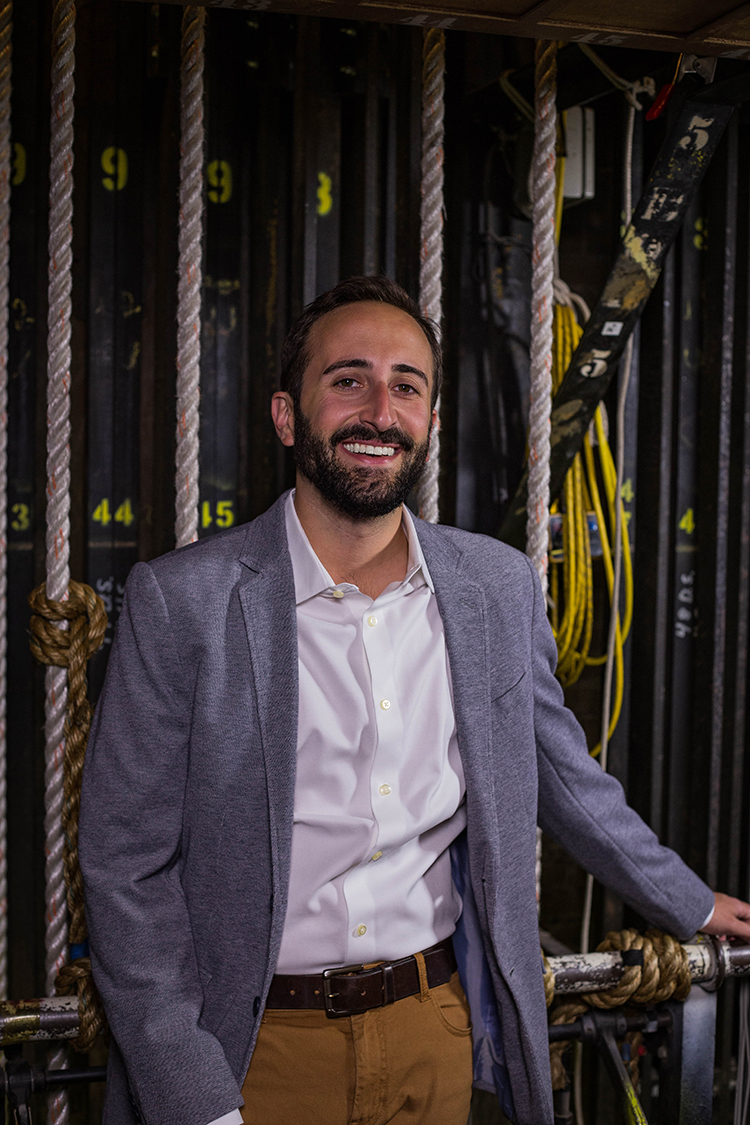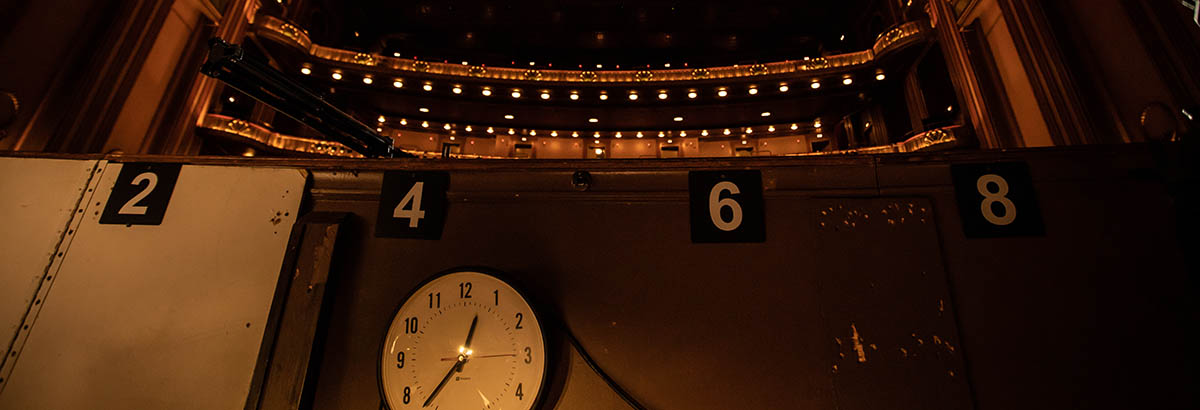April 18, 2019
Backstage Life: Scott Wolfson
Scott Wolfson - Associate Technical Director

What is your role here at Lyric, and how long have you held the position?
I am the Associate Technical Director and this is my ninth year at Lyric. In my role, I am the project manager for all of the technical elements in our productions in a season. For a new show, that means taking the sketches and drawings the designers give us and figuring out the best way to bring them to life. We send a lot of our work to shops all around the world that help us create the set pieces, so I help oversee that process. For all shows new and old, we troubleshoot any issues that might come up during the summer tech process, and I work with the design teams directly while we make changes, take notes, and decide how the scenery should be used. Another important element of my job is making sure all of our production scenery for our different shows can fit and coexist together backstage.
What led you to work at Lyric?
In undergraduate and graduate school, I studied theater technology. During that time, I worked on a few different opera productions, so that gave me a great foundation for what I do now. Right after graduate school, I heard that Lyric was looking to hire a technical assistant. I applied and interviewed, and was lucky enough to be hired for the job. Knowing the scale of the productions Lyric puts on
and the level of talent they attract was a huge draw for me. I’m also a big architecture nerd, so just working in this building was incredible in and of itself.
What’s a typical day like for you?
I’m an early person, so I like to arrive before the stagehands to get a good mental handle of what our team will be doing each day. Once they get in, I’m answering questions, compiling materials (metals, carpentry tools, rigging supplies), and generally figuring out how all of the scenery pieces can work together. In the summer, we work with the design teams and make a lot of changes to the sets, reimagine scenic elements, and put a plan in place to maintain them. After that, I work with our shops to build everything and make sure we have what the designers need by the time they return for the official rehearsals. From the rehearsal process up until the show’s opening, I’m working to make sure everything is running as it should, and getting final touches in place for each production.
What’s the most challenging aspect of your job?
Finding a balance between what the designers want and the physical limitations we have in place here at Lyric can be challenging. It can also be tough to get scenery elements for multiple shows to exist harmoniously together. Sometimes we might have two shows running at the same time that have large scenery elements or that need the exact same overhead space. We tend to solve that problem using different technology but juggling it all is like working on a really complex puzzle.
What keeps you committed to the work you do?
It might sound like a cliche, but seeing everything come together after putting in a lot of hard work on a production is what keeps me committed. We sometimes work on a show for 18-24 months, so to see the fruits of your labor, when the curtain finally goes up and everything runs smoothly, makes it all worth it.
What’s something about your job that people might not know?
The amount of physical running around I do to ensure things run smoothly. Many times I’m going from the lower-level basement up to the 12th floor over and over again to try to get different things to mesh together. For instance, the lift from the basement might need to line up with something being flown in from our grid, which is 150 feet up. Putting an office tower around an opera house makes getting from place to place a little difficult. It can often mean you’re running outside, going up and down multiple freight elevators, or sprinting up flights of stairs. I definitely get a good work out in!
Favorite Lyric moment?
A highlight was getting to see the backdrops being painted for the Ring cycle. Everything we do here is on a large scale, but those drops are so large (50 x 76 feet), the paint shop had to rent a soundstage in Cardiff, Wales, just to lay them out. It was one of those moments where the grandness of what we do really sank in… to see ten painters walking around barefoot painting this massive sunset was really remarkable.
Beyond opera, what are your other passions?
My job requires me to be inside a lot, so in my free time I enjoy spending time outdoors. I escape to Colorado when I can, and I also like biking and reading near the lake. As I’ve gotten older and busier, sometimes doing nothing feels better than doing something. But I do like seeing stand-up comedy when I get the chance.
What are you feeling at the moment, with the cancellation of the RING cycle, and what are your warmest memories of the project as a whole?
Having the Ring cancelled was truly heartbreaking. While Johan Engels (original scenic designer) passed away just before the final design presentation, I had the pleasure of working with him on Parsifal, a few years prior. While a daunting force to collaborate with, he had incredible vision. Seeing his design models for the four shows made it feel as he was still part of the journey, though it's now been cut short. It was a wonderful and exhausting 5 years to get here; witnessing the entirety of Lyric's passionate work up to this point has been incredible.
What's your favorite way to spend your free time?
It's a bit odd to spend so much time away from the Opera House, but my wife and I are enjoying our long walks around Lincoln Square. Focusing on the present has been a fortunate side effect of the current situation.
What are you most looking forward to in the 2020/21 season?
There are some fabulous operas next season (The Rake's Progress is such a wonderful production), but if I had to be honest, I'm really excited about Singin' in the Rain. In 2007, I built a production for a now defunct community theatre in Glenview, and I've been looking forward to working on it again ever since!
Photo: Joleen Billingham
